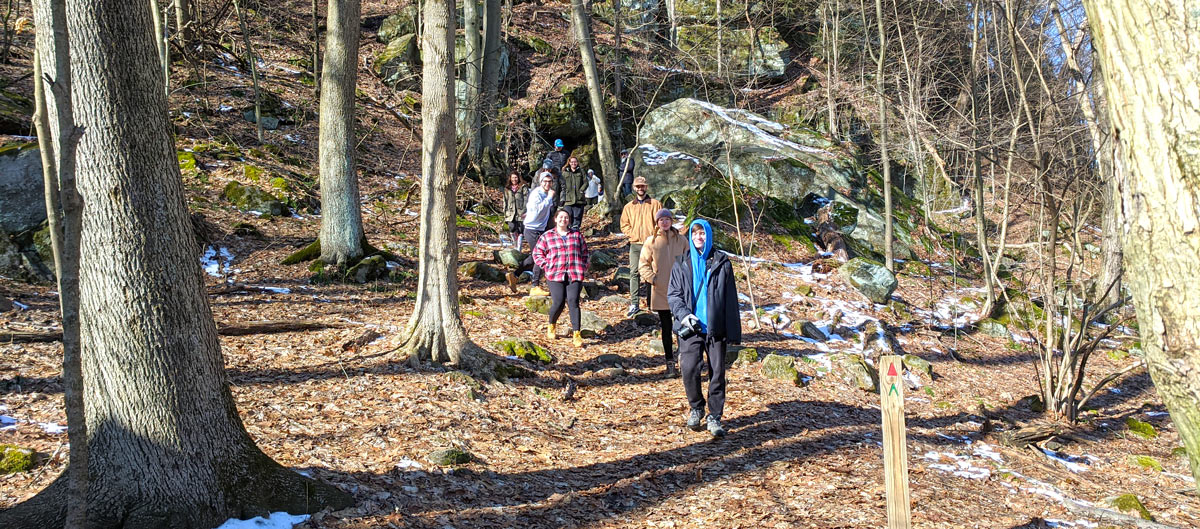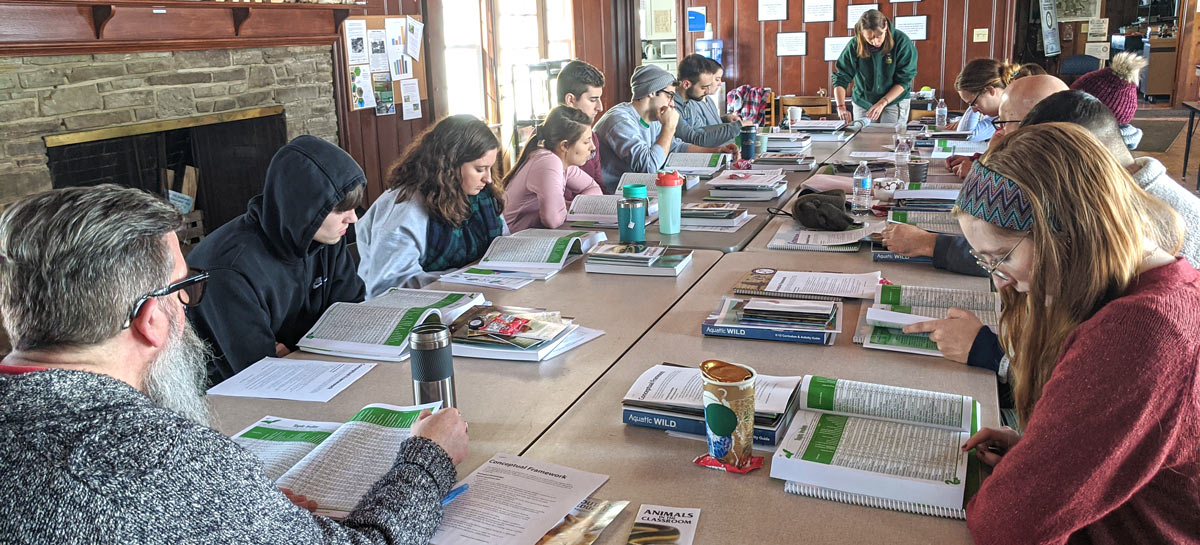During a pandemic, UA students created curriculum for the outdoors
The greatest classrooms can often be found in nature.
Students at The University of Akron (UA) recently designed and created outdoor education curriculum kits that both educators and parents can use to teach children about subjects ranging from tracking wild animals to learning how Ohio’s earliest inhabitants used the state’s natural resources.
The virtual kits are a result of a spring 2020 course called “All the World’s a Classroom,” supported through UA’s Experiential Learning (EXL) Center. The course, which combines elements of environmental science and education, is an “unclass” — a for-credit course that is not tied to any specific major, but is open to students from any academic background and involves hands-on learning activities.

Students in the “All the World’s a Classroom” unclass participated in a hike in January at Camp Christopher in Akron as they observed and assisted with a middle school camp as part of the course.
More than a dozen undergraduate and graduate students created several online curriculum kits that cover topics such as turning soil into paint, bird watching, making plant cell models and identifying the effects of pollution. Each kit includes background information, activities, supply lists, resources, assessment tools for educators, and describes how each kit satisfies state standards for certain grade levels. Though initially designed for educators, parents can also enjoy these easy-to-follow activities with their children outdoors.
“People of all ages are curious and want to learn more about what is around them and how to interact with nature,” says Dr. Lara Roketenetz, manager of UA’s Field Station at the Bath Nature Preserve and co-instructor of the course. “Obviously, this can be intimidating if you didn’t grow up mucking about in wetlands to catch bugs or romping through streams to find fossils. We wanted to take the ‘eww!’ out of it and replace it with ‘awe!’ We also covered a lot of great primary literature about how incorporating nature-based learning can be beneficial for students on many levels.”
Connecting nature and the classroom
This unclass focused on techniques from the field of environmental education and helped students bridge the connections from nature to the classroom. Students learned to use and become certified in pre-existing nature-based curriculum, how to deliver impactful STEAM (science, technology, engineering, art and mathematics) content to various audiences, and how to determine the best way to assess these types of interactions. Each curriculum kit and the associated lessons adhere to the Ohio Learning Standards and the national Next Generation Science Standards.
“All content areas have learning standards, which are essentially guidelines for classroom instruction,” says Dr. Gary Holliday, co-instructor of the course and associate professor of curricular and instructional studies in the LeBron James Family Foundation College of Education. “And, all classroom curricula and state tests are aligned with the standards. If we want teachers to use the curriculum kits developed in our course, they should also be aligned with the current science and other content standards.”

In February, students in the “All the World’s a Classroom” unclass participated in training at UA’s Field Station in Bath for Project WILD, a wildlife-based conservation and environmental education curriculum. As part of the course, students learned to become certified in pre-existing nature-based education programs.
The course came to into existence after Holliday brought teacher candidates to the Field Station in 2019 to learn about outreach actives and in-classroom visits in K-12 schools. From that visit, Roketenetz and Holliday discussed teaching a curriculum-based class for both teacher candidates and other majors (biology, geosciences, museum and library sciences) that would occur at the Field Station over the course of a semester.
For the students, the course enabled them to become more comfortable in nature and place-based instruction, and allowed them to design and conduct lessons and activities they can use with their own students in the future.
Like everything else, the COVID-19 pandemic had an impact on the course. Virtual kits were not the intended result; rather, physical kits were planned to be created and housed at the Field Station for community outreach programs. Still, the lessons and activities can be accessed by anyone and be taken into nature via a smartphone or tablet.
“The students were such troopers about having to do everything in this digital format, and we were very impressed with what they came up with,” says Roketenetz.
Media contact: Alex Knisely, 330-972-6477 or aknisely@uakron.edu.
